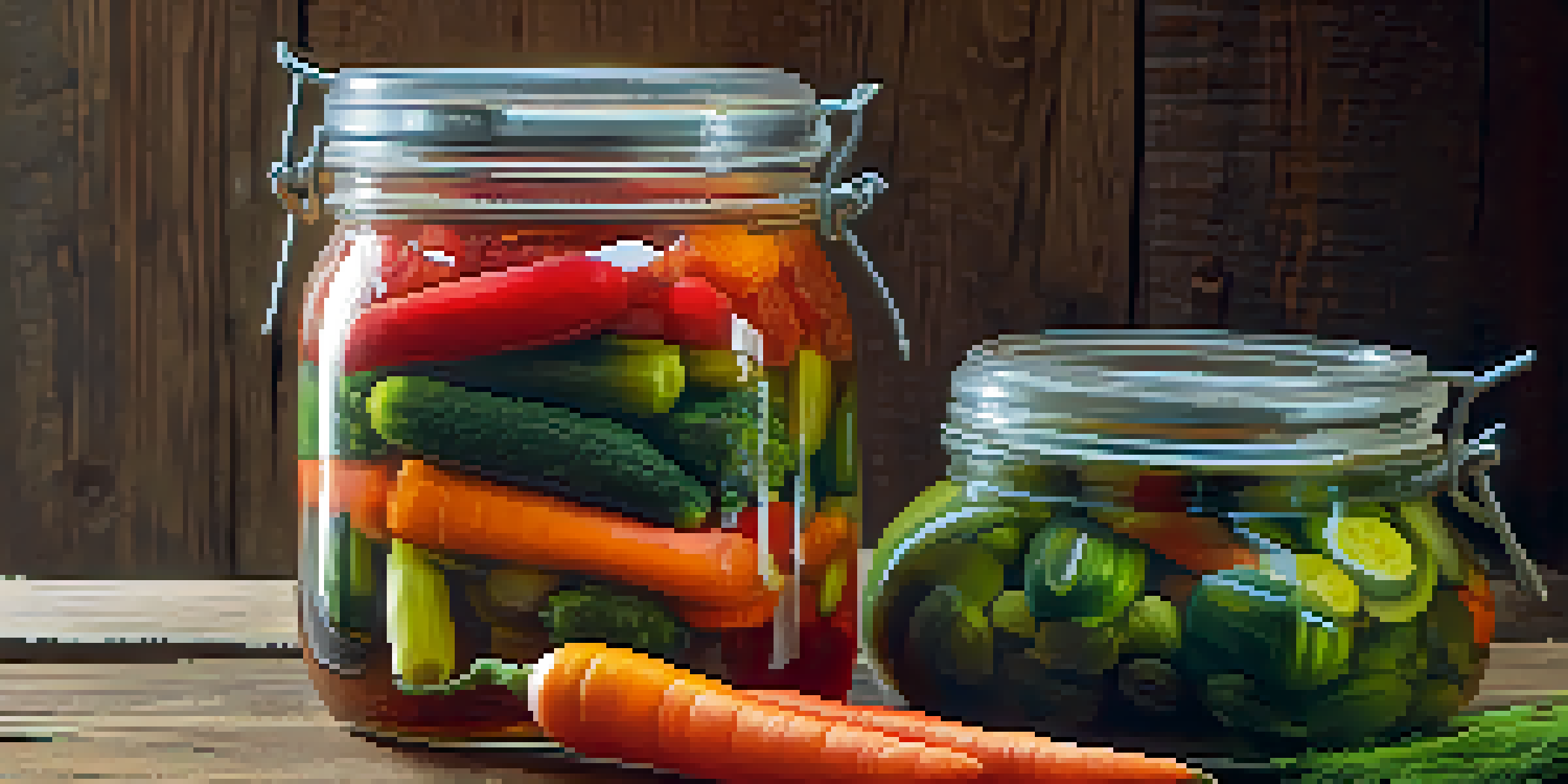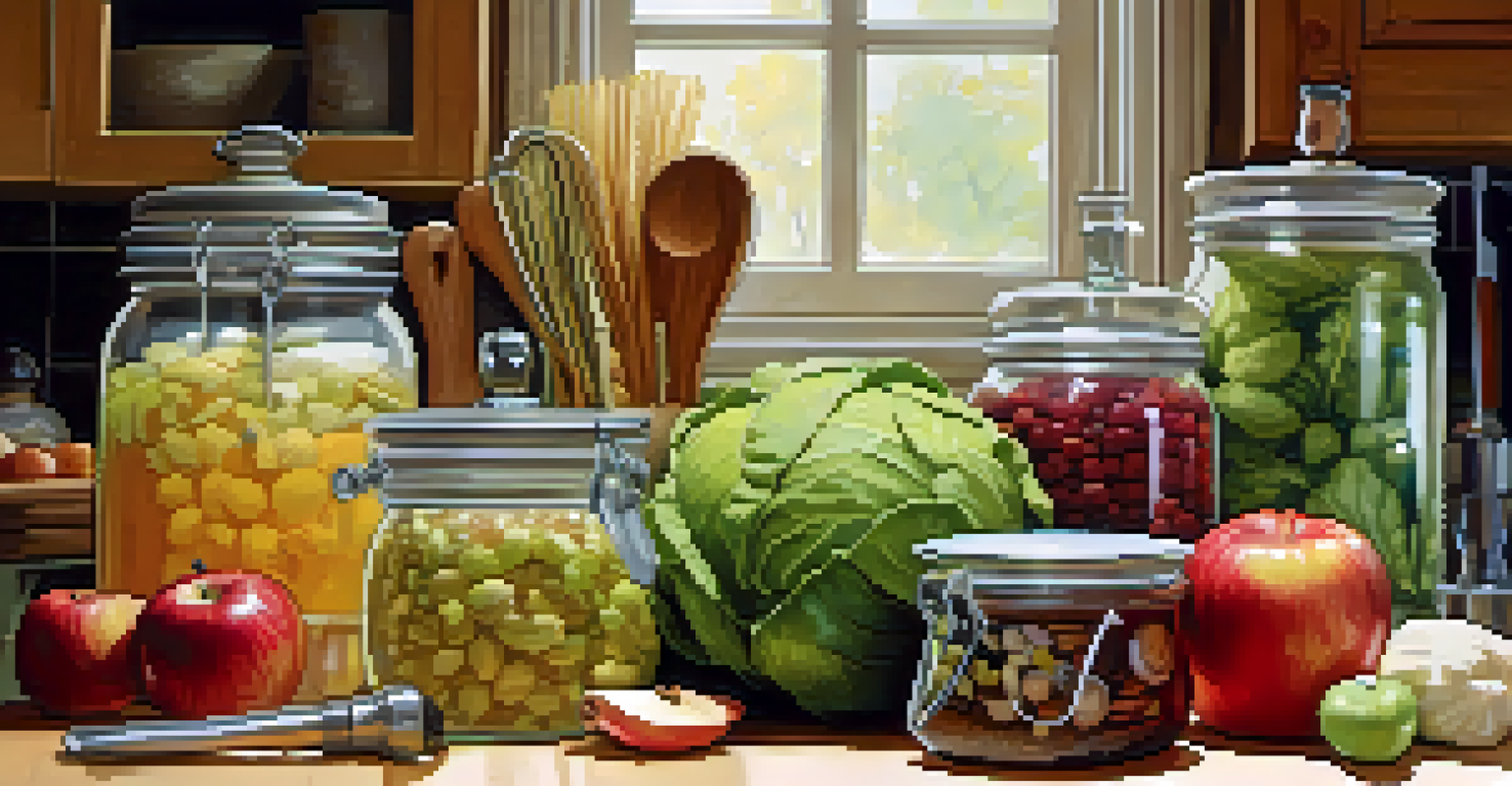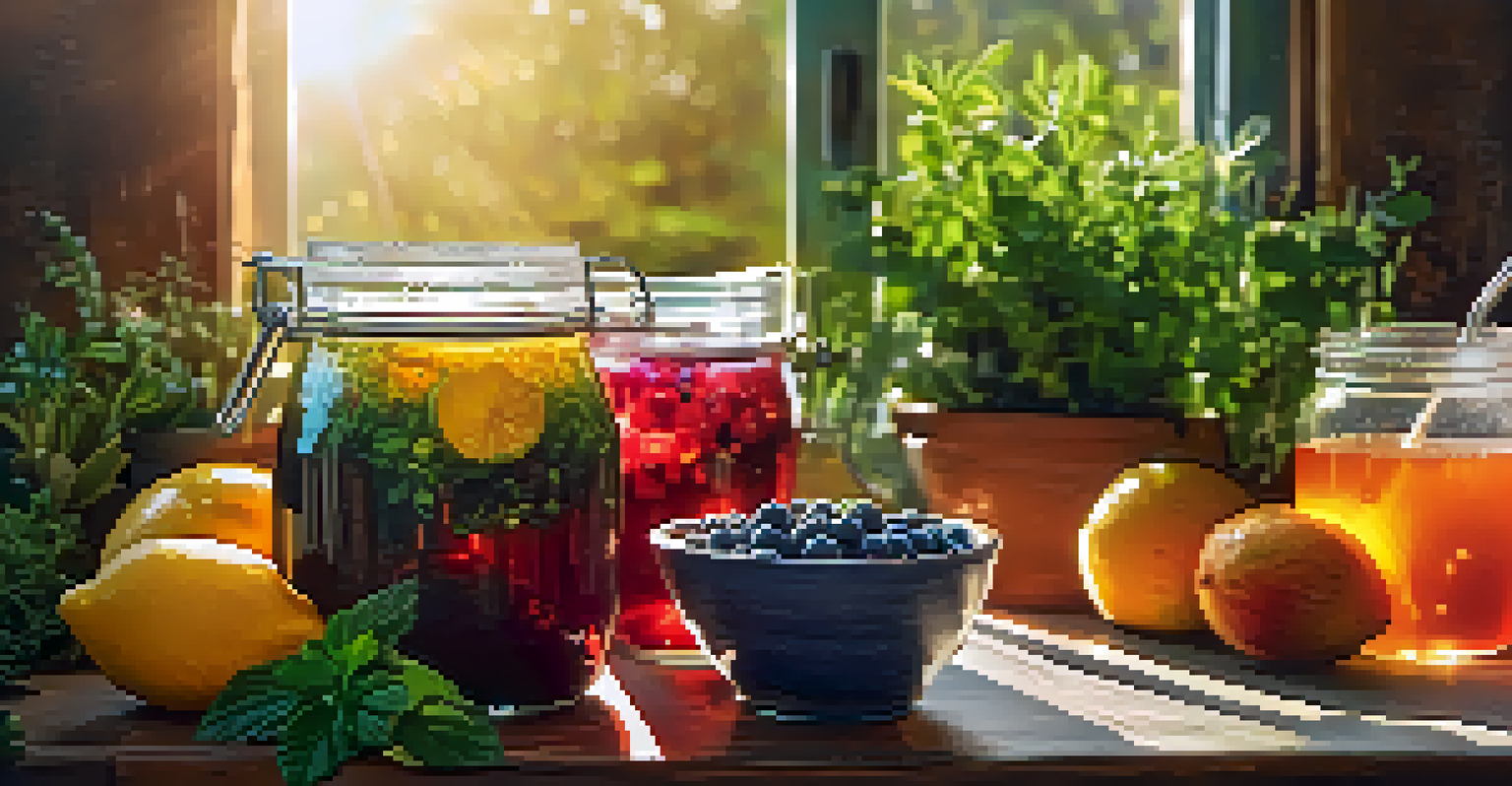Fermentation Techniques: A Gourmet Chef's Guide

Understanding Fermentation: The Science Behind the Magic
Fermentation is a natural process where microorganisms like yeast and bacteria convert sugars into acids, gases, or alcohol. This age-old technique has been utilized for centuries, transforming simple ingredients into complex flavors. Think of it as nature’s way of preserving food while enhancing its taste and nutritional value.
Fermentation is the magic of life, transforming food into something that nourishes both body and spirit.
Imagine biting into a tangy piece of sourdough bread or sipping on a refreshing glass of kombucha; these delightful experiences are direct results of fermentation. The process not only improves flavors but also introduces beneficial probiotics, which can be great for gut health. Understanding the science behind fermentation can help any chef appreciate its artistry.
With the right techniques, fermentation can unlock a world of culinary creativity. Whether you’re crafting pickles, brewing beer, or making yogurt, knowing the basics will allow you to experiment confidently in the kitchen. It's all about letting nature do its work while you guide the process.
Choosing the Right Ingredients for Successful Fermentation
The quality of your ingredients plays a crucial role in fermentation. Fresh, organic produce typically yields the best results. Consider vegetables like cabbage for sauerkraut or fruits like apples for cider; these ingredients not only provide flavor but also contain natural sugars that aid in the fermentation process.

Moreover, using the right type of water can make a significant difference. Chlorinated water can inhibit fermentation, so opt for filtered or spring water when possible. Additionally, selecting the right salt, such as sea salt or kosher salt, can enhance the fermentation process by creating the ideal environment for beneficial microorganisms.
Fermentation Enhances Flavor & Health
The fermentation process not only transforms ingredients into flavorful dishes but also introduces beneficial probiotics for improved gut health.
Lastly, don’t forget about temperature! Most fermentations thrive in a warm, dark environment. Understanding how temperature affects your ingredients can lead to more consistent and flavorful results, making your dishes stand out on any gourmet menu.
Essential Tools for Fermentation: Getting Started
Starting your fermentation journey requires a few essential tools. A wide-mouth glass jar is perfect for small batches, allowing for easy monitoring of the fermentation process. You might also want to invest in fermentation weights to keep your ingredients submerged, which is crucial for preventing mold.
The process of fermentation is a natural way to preserve food and enhance its flavor, turning simple ingredients into complex culinary delights.
A pH meter can be a valuable addition to your toolkit, helping you gauge the acidity level of your ferments. This is especially important for those looking to achieve specific flavor profiles. Additionally, a thermometer will ensure that your environment remains at the optimal temperature for fermentation.
Lastly, don’t underestimate the importance of labels! Keeping track of your ingredients, start dates, and any variations will help you refine your techniques over time. With the right tools at your disposal, you’ll be well on your way to mastering fermentation.
Starter Cultures: The Key to Flavorful Ferments
Starter cultures serve as the foundation for many fermented foods, introducing specific bacteria and yeasts that contribute to flavor development. For example, using a sourdough starter can give your bread that distinct tangy flavor and airy texture that everyone loves. Cultures can be purchased or created at home, adding a personal touch to your ferments.
Each type of starter culture brings its unique traits to the table. Yogurt cultures provide that creamy texture and probiotic benefits, while kefir grains create a slightly effervescent drink packed with nutrients. Understanding the characteristics of different cultures can help you choose the right one for your culinary goals.
Quality Ingredients Are Essential
Using fresh, organic ingredients and the right type of water and salt significantly impacts the success of fermentation.
Experimenting with various starter cultures can lead to exciting flavor profiles. Don’t hesitate to mix and match to create your signature fermented dish. The beauty of fermentation lies in its adaptability, encouraging chefs to unleash their creativity in the kitchen.
Basic Fermentation Techniques: A Step-by-Step Approach
Mastering basic fermentation techniques is essential for any aspiring gourmet chef. Start with a simple recipe, such as pickling vegetables. Combine your chosen veggies with water, salt, and spices in a jar, then let them sit at room temperature for several days. This straightforward process allows you to observe fermentation in action.
Another popular technique is making your own yogurt. Heat milk to a specific temperature, then add your starter culture and maintain the right temperature for several hours. Watching the transformation from liquid to creamy yogurt is both rewarding and delicious. These techniques lay the groundwork for more complex ferments down the line.
As you grow more confident, consider exploring advanced techniques like wild fermentation, where you rely on naturally occurring microorganisms. This method can yield unique flavors but requires patience and a bit of experimentation. With practice, you can elevate your dishes and impress your guests with your newfound skills.
Fermentation Safety: Best Practices to Follow
Safety is paramount when it comes to fermentation. While the process is generally safe, it’s crucial to follow best practices to avoid any mishaps. Always use clean tools and containers to prevent unwanted bacteria from spoiling your ferments. A clean workspace ensures that beneficial microorganisms can thrive without competition.
Monitoring your ferments is equally important. Keep an eye out for any off smells, unusual colors, or signs of mold. If something seems off, trust your instincts and discard the batch. It’s better to be safe than sorry when it comes to fermented foods.
Safety is Key in Fermentation
Following proper safety practices and monitoring your ferments can prevent spoilage and ensure delicious results.
Lastly, understanding the fermentation timeline can help you know when your food is ready. Each ferment has its own ideal time frame, so be patient and give your creations the time they need. Following these safety tips will help you enjoy the delicious rewards of your fermentation efforts.
Exploring Advanced Fermentation Techniques for Gourmet Flair
Once you've mastered the basics, it’s time to explore advanced fermentation techniques that can elevate your culinary creations. Techniques like lacto-fermentation allow you to create rich flavors in vegetables, while fermentation can enhance the umami profile of various ingredients, such as mushrooms or miso.
Experimenting with aged ferments can also add depth to your dishes. Consider creating your own fermented hot sauce or aging a batch of kimchi for a more complex flavor. These advanced techniques not only enhance taste but also showcase your skills as a gourmet chef.

Furthermore, don’t shy away from combining fermentation with other cooking methods. Use fermented ingredients in sauces, dressings, or as a topping on your gourmet creations. These unique flavor combinations can surprise and delight your guests, setting your dishes apart from the rest.